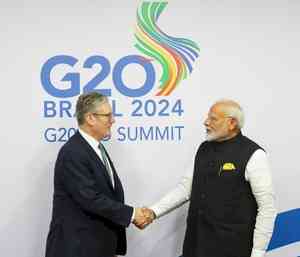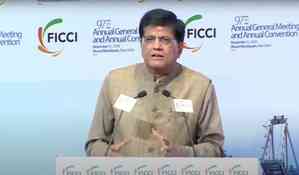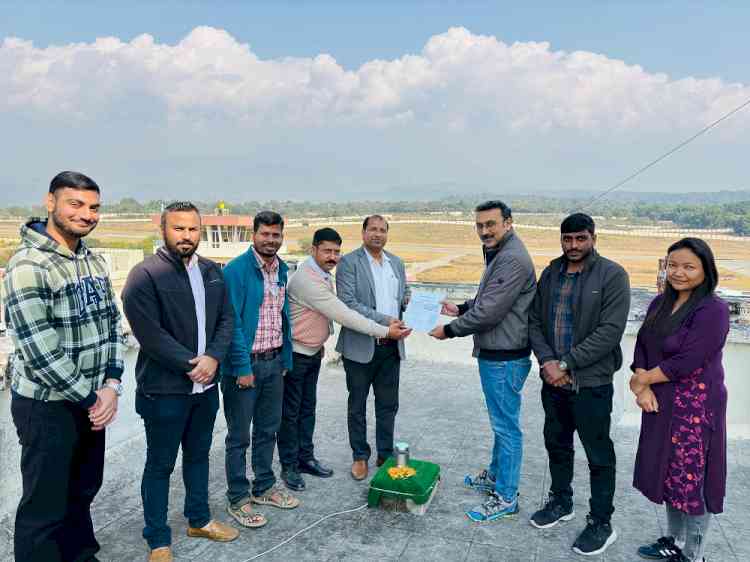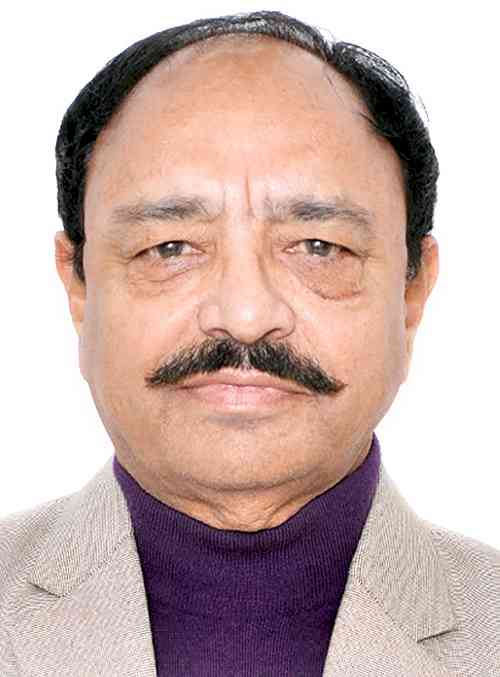Listen to nature and make buildings earthquake resistant (Opinion)
Floods, droughts, cyclones, tsunamis, landslides and earthquakes are all natural events that have been taking place even before the evolution of man.
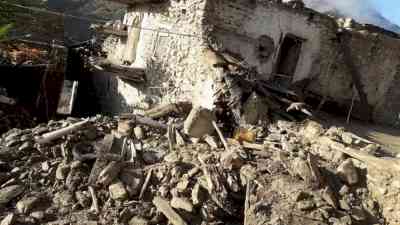
DR DHRUV SEN SINGH
Floods, droughts, cyclones, tsunamis, landslides and earthquakes are all natural events that have been taking place even before the evolution of man.
However, these natural events become hazards when loss of life and property takes place due to the interference of man in the natural cycle of these events.
All components of the environment -- the atmosphere, hydrosphere and lithosphere -- are providing free of cost the air, water and soil without which we cannot sustain. Despite all efforts, we repeatedly fail to exercise any control over natural disasters.
An earthquake is a vibration of the surface of the earth, it is caused due to internal disturbances (elasticity or the isostatic adjustment of rocks) of the earth. It may be caused by humans as well as natural activities.
The upper part of the Earth, which is 100 km thick, is known as the Lithosphere.
The Lithosphere is broken into a number of smaller fragments known as plates. These plates are continuously moving in different directions. Plate Tectonics describes the movement and deformation of plates and provides an explanation for various natural processes such as the origin of mountains, oceans, earthquakes, volcanoes, and upland/lowland areas.
The Indian Plate is continuously moving towards the north at the rate of about 6.5 cm per year. This north moving Indian Plate is colliding with the south-moving Tibetan plate, which is responsible for the evolution of the Himalaya.
The continuous movement, collision of the plates and radioactive minerals releases energy which is stored in the subsurface.
This stored energy is released through the weak zones and causes earthquakes. Frequent earthquakes means that the entire energy has not been released.
Three types of earthquake waves are generated P, S and L waves.
1. Primary or Longitudinal waves also known as P-Waves
2. Secondary or Transverse Waves also known as S-Waves
3. Surface or Long Waves are also known as L-Waves
The EQ waves are not harmful, it is because of the collapse of the buildings that loss of life and property takes place. EQ is the property of brittle material, so any technique which reduces the brittle property of building minimises the damage by EQ.
Iron rods, wood, and Acrelic are materials which should be used in building to make it EQ resistant.
The place below the surface where EQ originates is known as Focus and the point on the earth surface perpendicular to Focus is known as Epicentre.
The focus may be located at shallow (0-70 km), intermediate (70-300 km), and deep (300-700 km) depth.
The Richter scale is based on the magnitude of the Earthquake at its source, whereas the other two are based on the intensity, and amount of shaking at a particular location and hence explain the amount of damage caused.
The EQ having 7 or 8 magnitude on the Richter scale may have 0 scale on the Mercalli scale if the damage is negligible. To minimize the panic among the people we should use the modified Mercalli scale as well.
The Himalaya, Ganga Plain and Southern Peninsula are the main physiographic subdivisions of India from north to south in order of decreasing tectonic activities and so the earthquakes.
When EQ took place in Koyna in Maharashtra, a new term reservoir induced earthquake (RIEQ) was introduced.
The RIEQ is anthropogenic and is characterized by the presence of foreshocks, and main shocks followed by aftershocks.
The natural earthquakes are characterised by main shocks followed by aftershocks. The instrument which measures the intensity of the earthquake is called Seismograph.
The amount of Radon gas increases in the atmosphere if the region is going to be hit by an earthquake.
India has been classified into four Seismic Zones (state wise) by the Bureau of Indian Standards (BIS) based on the past seismic history, namely, Zone-II, Zone-III, Zone-IV and Zone-V.
Out of all these four zones, Zone-V is the most seismic active region whereas Zone II is the least active. Lucknow and most part of the Ganga Plain lies in EQ zone III. It means it may be affected by moderate EQ only.
All the tectonic factors which cause EQ are almost inactive in most part of the Ganga Plain.
Therefore, Lucknow and most parts of the Ganga Plain are safe from Earthquakes. However, the Himalaya is tectonically active and so that parts of the Ganga Plain which are in contact with the Himalaya are sensitive to EQ.
The alluvium soil of the Ganga Plain also reduces the impact of EQ.
Earthquake is not a killer, it is because of the building collapse that loss of life and property takes place.
In our country, on 2.4 per cent of the world's total land 17 per cent of the total population is living. This means there is tremendous pressure of population on land, and we are forced to live in the peril zone.
Due to this pressure, caution is needed while constructing the buildings to make them earthquake-resistant to minimize the damage.
(Dr Dhruv Sen Singh is a professor of geology at the University of Lucknow. He was the member of the first Indian expedition to the Arctic and recipient of National Geoscience Award, Vigyan Ratna, Shichhak Shree and Saraswati Samman. The views expressed are personal)


 IANS
IANS 



